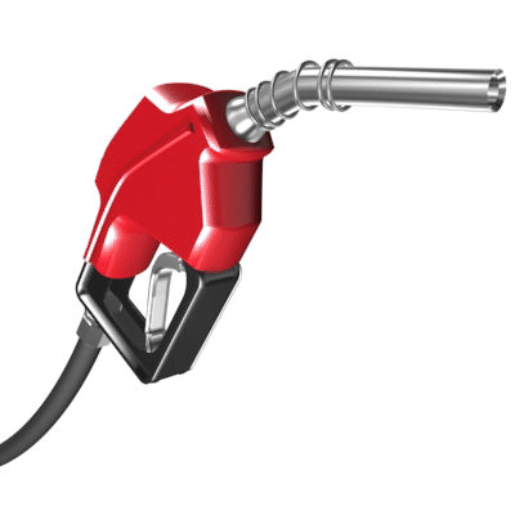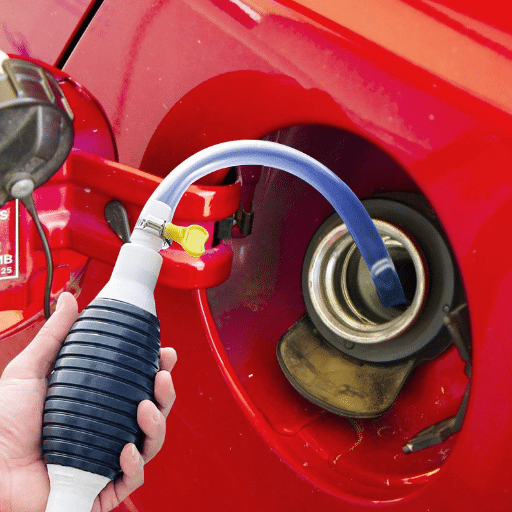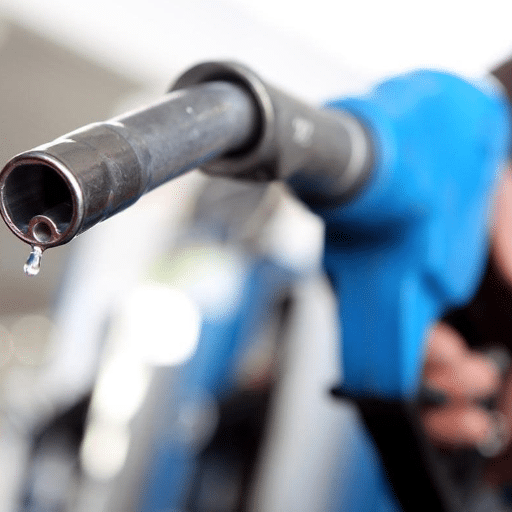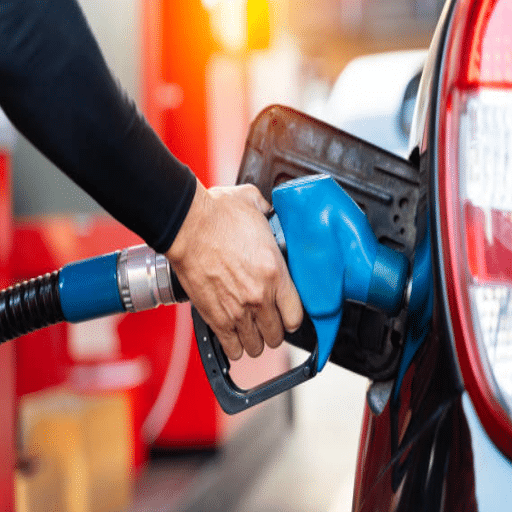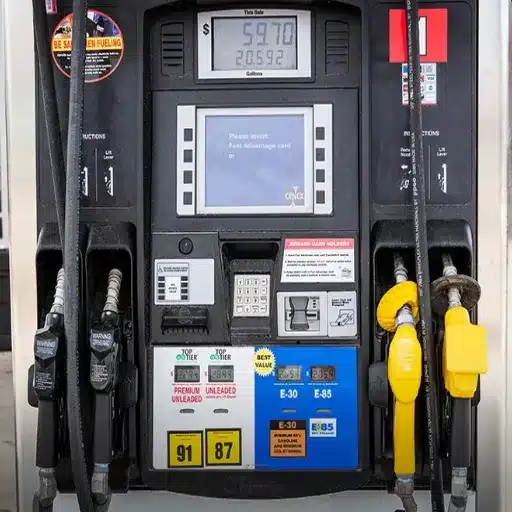Constructing a gas station is a tremendous undertaking that demands meticulous planning, numerous considerations, and complete knowledge about the costs. If you are an entrepreneur who is checking the fuel industry for opportunities or an investor who is determining the viability of this project, understanding the financial and logistic aspects is vital. The overall cost includes everything from land buying and regulatory permits to building expenses and equipment. The following article delineates the main elements of gas station construction costs, aiding you with the most significant details so that you will be able to make wise choices during the entire process.
Introduction to Gas Station Construction
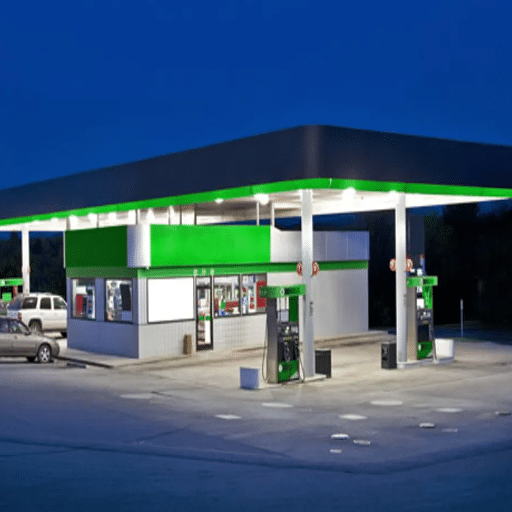
The establishment of a gas station necessitates thorough preparation, adherence to local laws, and a considerable monetary outlay. The most important steps are picking a location that is both strategic and crowded, getting the required permits, and laying out the design for smooth functioning. Generally, the expenses include purchasing the land, setting up the fueling area, building a convenience store (if any), installing fuel tanks, pumps, and safety systems, and so on. It is essential to adhere to environmental regulations and safety standards to avoid future liabilities. By proper planning and execution, gas station construction can be a quick route to a successful and eco-friendly venture.
Overview of the Gas Station Business
The gas station business is still an important part of the global energy and transportation sectors, providing millions of customers with fuel, auto services, and even convenience items. The latest data from the industry indicates that the worldwide gas station market is going to become larger, mainly due to the increasing need for fuel and the setting up of electric vehicle charging stations at the usual fuel outlets. The main sources of revenue are gasoline and diesel sales, convenience store items, car washes, and other ancillary services.
Gas stations in the U. S. state-generating annual incomes of $1.5 million to $2.5 million on average, and their profits mainly depend on the fuel markup, sales volume, and the presence of extra offerings like food, beverages, and automotive products. The integration of EV charging points into traditional fuel stations is also expected to enhance profitability in the future, as the drive towards sustainable energy becomes stronger.
Choosing the right location and planning the strategy properly are the most crucial factors in winning the competition in this industry. Gas stations planted on busy roads or near places where people live usually get more customers. In addition to this, using the latest technologies, like automatic payment systems and loyalty programs, can not only make the customers’ experience better but also increase operational efficiency. Gas station businesses can stay relevant and profitable in a constantly changing market only by being flexible and adapting to the trends in the energy sector.
Importance of Understanding Startup Costs
It is very important to know the costs that a company will incur from the very beginning for the success of the business. Business costs include not only the money laid out for equipment and stock that is never going to work, but also the daily overhead like rent, utilities, and salary for the workforce. Data indicates that typical small business startup costs would be $2,000 to $5,000 for home-based types, and a brick-and-mortar business may need at least $25,000 or more depending on the line of business.
Having a good grasp of these costs, entrepreneurs can make top-notch budgeting and even come up with personal savings, loans, or investments as the source of their funds. Also, it helps to cut down on financial risks because improper resources allocation results in the plan being unrealistic. Thus, in the absence of the required insight, business is likely to have a cash flow crunch—running out of money is the cause for failure in nearly 29% of startups.
Financial Planning Insight: Knowledge of these costs will also assist in preparing financial forecasts that are necessary for luring like angel investors or banks. Startups will be putting themselves in a better position to prepare for the unforeseen costs and tauntingly, they can apply their methods for growth when they come up with the detailed expenses for things like licensing, marketing, insurance, and legal fees.
Basic Components of Gas Station Construction
When a gas station is built, different crucial parts that are essential blacktop and so on and they are all crucial to the station’s life safety, utility, and convenient functioning. Underneath these are the parts that make up the whole story:
Fuel Storage Tanks
Underground storage tanks (USTs), in short, are a vital element for preserving big amounts of the fuel. The current tanks are usually constructed from double-walled fiberglass or steel to avoid any leakage and contamination. Moreover, the regulation sometimes requires the installation of the entire tank monitoring system to detect any leak and also to ensure protection of the environment. Depending on the size of the station and fuel demand, the tank capacity can vary from 10,000 to 30,000 gallons.
Fuel Dispensers and Pumps
The customer gets gasoline or diesel through the fuel dispensers. Calibrated pumps, which are the latest, have a digital display that shows payment methods, customer loyalty program integration, and even ads. For the customer’s sake, efficiency of these systems is of utmost importance as it facilitates reduced wait times and increased satisfaction of the customer.
Canopy Structure
The canopy is a shield against the weather for both customers and vehicles and a sign space and road branding as well. The new-style canopies have installed LEDs which give more visibility and energy efficiency while posing less electricity costs at the same time, thus the environment at night is made safer.
Convenience Store (Optional)
An overwhelming number of fueling stations incorporate a convenience store that plays a large role in the overall profit. The goods sold in these stores can range from snacks, drinks, basic groceries, and fast food as well. The data from the industry states that more than 60% of the profits of gas stations being non-fuel sales indicates the major part that convenience stores play in the business model.
Environmental and Safety Systems
Local and federal environmental law compliance entails the use of systems such as vapor recovery units (VRUs) to capture the fumes from the tank that are in danger of escaping during refueling. Safety concerns also encompass fire suppression systems, exhaust ventilation, and spill containment.
Pavement and Driveways
Highly resilient concrete or asphalt is necessary to bear the constant movement of heavy vehicles and to not be affected by fuel or oil spills. The grading should be appropriate so that even in the case of heavy rains, there is no water logging and thus, no hazards arise.
Required Permits and Zoning Compliance
It is of utmost importance that before a construction project kicks off, the necessary permits are obtained and the zoning requisites are met. Among the permits are environmental impact assessments, building codes, and traffic flow analysis, which are referred to, to confirm that the location is appropriate.
Sustainability Features
Eco-friendly construction is the main concern of modern stations that is why they are looking for solar, energy saving LED lighting, and electric vehicle (EV) charging stations. The tapping of the EV market needs the charging points to be included as wells for the future good of the station to be still being critical.
Signage and Branding
Signage gives the opportunity of clear communication between the customer and the gas station regarding fuel prices, promotions and the station’s brand identity. Digitally controlled LED signs which allow for instant changes of the pricing are becoming the norm thus giving more campaigns’ flexibility in advertising.
Integration Success: The brilliance in integrating these components is not only to ensure the operation success but also to provide the best customer experience, maintain health, safety, and compliance standards.
Cost Breakdown for Building a Gas Station
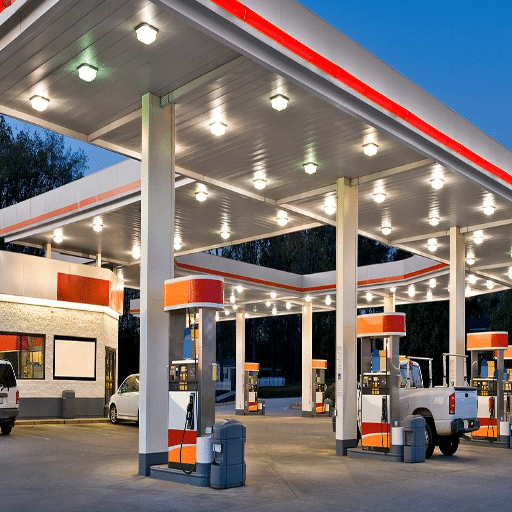
The construction of a gas station entails several major costs, which can be classified as follows:
- Land Acquisition – This will pay for the purchase or leasing of a property in a location that is both attractive and accessible. The prices can be very different depending on the location, size, and the conditions of the market.
- Construction Costs – Station construction consists of building fuel storage tanks, pump stations, a convenience store (if one exists), and other facilities related to this. Moreover, this also consists of costs for utilities, permits, and adherence to local regulations.
- Equipment and Technology – Modern dispensers, POS systems, signage, and monitoring equipment are crucial for operational efficiency and customer satisfaction, thus investing in them is mandatory.
- Inventory – The cost also includes the initial stock of fuel and convenience store items, such as snacks, drinks, and others.
- Staffing and Training – The ongoing cost of hiring and training employees to handle the daily operations should always be included in the budget.
- Marketing and Branding – Assignment of budget for the initial advertisements, launching promotions, and building the station’s brand identity is included in this cost.
Budget Planning: Categorizing these costs in such a manner provides a clear and outlined picture of the financial requirements and promotes accurate budgeting for the establishment and gas station operations start-up.
Initial Costs to Open a Gas Station
The establishment of a gas station consists of a massive outlay of cash in the beginning and the application of thorough and careful financial planning. Below are some of the most important cost perspectives:
- Property Acquisition or Leasing – The price for land and property acquisition or leasing differs according to the location, but it is still, in most cases, one of the biggest investments, though, this also includes any zoning assessments or permits that may be required.
- Construction and Development – Fuel supply and installation of fuel tanks, pumps, and canopies are making it harder for the station help is coming from construction material, contractors, and equipment through providing finance in various parts needed for the station setup.
- Fuel Supply Contracts – Going into relationships with fuel vendors usually results in the payment of an initial fee and strict standards are clamped down on the installation process such as tanks and pumps.
- Licensing and Permits – Obtaining state and federal regulations requires the payment of permits, environmental compliance fees, and inspections as part of the cost of doing business in that area.
- Inventory and Equipment – Besides fuel, the costs consist of stocking convenience store items, buying point-of-sale systems, and keeping the equipment daily operation functional.
- Operational Reserves – It is very important to set aside funds for utilities, the first wages for employees, insurance, and unexpected expenses as this is the only way to cover the operational costs during the startup period.
Investment Range: Even though the specific costs are varying from $250,000 to more than $2,000,000 as per the station’s location and size, a proper budget plan and trustworthy financing means are essential for the successful launching.
Detailed Breakdown of Gas Station Construction Costs
There are several factors that contribute to the cost of building a gas station such as the land, pipeline, etc. Here is a succinct summary based on industry stats.
| Cost Component | Estimated Cost Range | Description |
|---|---|---|
| Land Acquisition | $100,000+ | Acquiring a piece of land that meets the requirements of a gas station can be a hefty cost. The location plays a major role in determining the prices which are usually $100,000 in price and above in busy urban areas. |
| Construction Costs | $50,000 – $200,000 | The development of the station usually costs between $50,000 and $200,000 for a simple structure. The price includes the construction of the convenience store, the setting up of the fuel pumps, and the building of essential infrastructural facilities such as parking areas and entrances. |
| Fuel Pumps and Tanks | $400,000 – $600,000 | The underground storage tanks and modern fuel pumps installation represent one of the biggest expenses amounting to around $400,000 to $600,000 based on the capacity and technology used. |
| Permits and Licensing | $10,000 – $25,000 | Getting the permits and licenses is necessary for the legal operation of the gas station. The entire process would cost you about $10,000 to $25,000, depending on the local rules, environmental conditions, and the like. |
| Equipment and Technology | $25,000 – $50,000 | The outfitting of a gas station hookup (refrigeration, point-of-sale systems, and security features) would cost around $25,000 to $50,000. |
| Signage and Branding | $15,000 – $50,000 | Branded signs and promotional materials installation can cost about $15,000 to $50,000 as having visibility is very important to drawing in customers. |
| Unforeseen Expenses | 10-20% of total | It is recommended that 10–20% of the total cost is set aside as a buffer to cover unforeseen events like construction delay or changes in federal laws. |
Estimated Total Costs
A construction project combining all these things is likely to be in the cost range from $250,000 to even $2,000,000 or more when it comes to a gas station. The final price will depend on the location, size, and the given station’s amenities among other factors. Proper planning, realistic budgeting, and considering financing options are some of the important steps to take for a successful investment.
Operational Costs Post-Construction
Gas station owners are faced with the dilemma of paying operating costs after the construction phase to keep their businesses running smoothly every day. Employee wages, utilities (for electricity and water), fuel supply replenishment, maintenance and repairs, marketing, and insurance premiums are the main costs that continue to drain the funds. In addition, credit card processing fees may add a big chunk to the expenses since a majority of consumers favor electronic transactions. Compliance with environmental regulations and routine equipment upgrades could also create new variable costs. The total operational costs will depend on factors such as location, size of the station, and the extent of the services offered, but still, the success of the business in terms of profitability will be determined by the efficiency and management of the operations just like in the long run.
Factors Affecting the Cost to Open a Gas Station
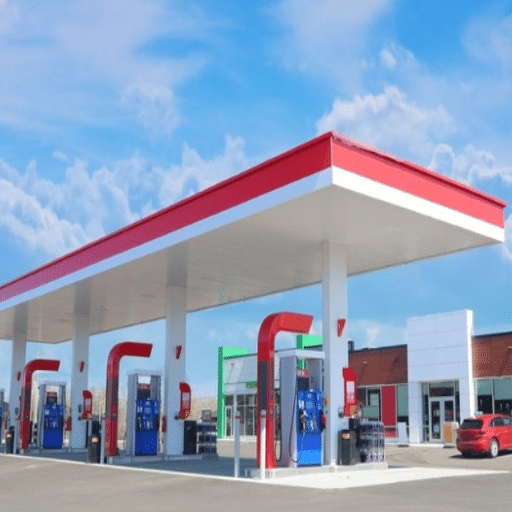
- Location: The price of land or rental varies greatly with the location. Urban centers or places with high foot traffic usually involve higher costs but also attract more customers.
- Size of the Station: Big stations with several fuel pumps and adding like a convenience store, and car wash facilities need a lot of money to be invested upfront.
- Construction and Equipment: The major capital expenditures for the station are the building and buying of fuel pumps, underground tanks, and other vital equipment.
- Licensing and Permits: Local, state, and federal regulations may demand specific permits and licenses that come with a fee.
- Fuel Supply Contracts: The signing of a contract with a fuel supplier who offers reliability might include upfront costs or volume commitments.
- Amenities and Services: The providing of extra services, such as EV charging stations, food outlets, or maintenance bays not only raises the initial expenses but also increases the revenue potential.
Decision-Making: By recognizing and assessing these factors, potential owners can make better decisions and allocate their resources to open a gas station that will be profitable.
Location and Land Acquisition Costs
The location of the gas station is a major determinant of the cost of land acquisition. Areas with heavy traffic, such as busy city intersections or exits from highways, are usually the most expensive for land, but they also guarantee high customer volumes, thus partially covering the initial investment. On the other hand, the rural or suburban locations may have cheaper land but the trade-off is less traffic, which then means careful decision-making on the part of the investors. Besides that, zoning laws are equally important factors as some places may limit or outright ban the construction of gas stations. Potential owners need to consider local market demand, competing gas stations in the area, vehicle accessibility, and the plans for the area. Doing a thorough market study and bringing in the real estate experts can be a great help in making sure that the selected site is not only legally permissible but also favorable in terms of strategy.
Permits and Regulatory Requirements
Acquiring permits as well as adhering to regulations is inevitable if one intends to set up a gas station. This often opens up the avenue for obtaining environmental permits that would include soil and groundwater testing as safeguards against contamination. Zoning and land use permits are the other necessary ones that ascertain the site has gone through the first phase of approval for the commercial sale of fuel. Besides, the builders have to get the permits for the storage tanks, canopies, and retail facilities, in this case, the fuel storage tanks, canopies, and retail facilities. Adherence to fire safety regulations, which encompass the appropriate storage and handling of flammable materials, is non-negotiable. On top of that, business licenses have to be acquired, either local or state registration has to be done, and federal regulation compliance, in this case, by the Environmental Protection Agency (EPA), has to be met for the business to be legally and safely operational. Engaging regulatory agencies at the start and hiring professionals with good experience are the ways that can make the process smoother and save time and money which would have otherwise gone to delays.
Supplier Contracts and Fuel Pricing
Negotiating supplier contracts is a process that contains a lot of important negotiations for that matter negotiation of terms that will yield a dependable and an uninterrupted fuel supply would be one of the major steps. Certain elements that need to be taken into consideration are delivery schedules, payment terms, and pricing structures. Fuel prices, needless to say, can vary considerably because of the market, for example, crude oil prices, supply chain problems, and political changes in the world. To limit the impact of the price swings, companies usually employ one or more of the following pricing mechanisms like, fixed pricing, index-based pricing, or a combination of both. Fixed pricing secures a certain price, while index-based pricing adapts to the market offering the buyer a choice. Partnering with suppliers who practice honesty in their pricing models and have a good reputation can be a way to remain competitive and also a channel that leads to proper communication for the successful operation of the company in the long term.
Financing Your Gas Station Startup
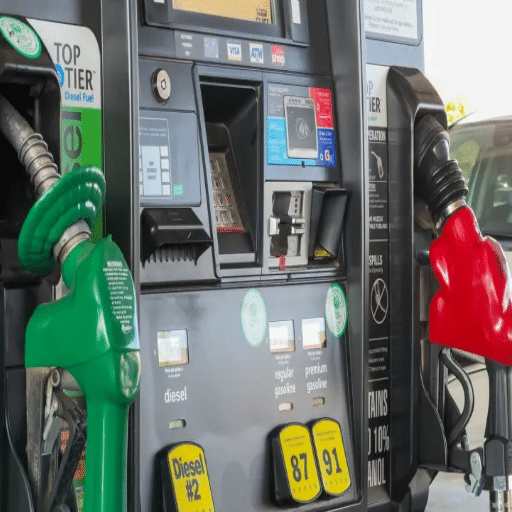
Gas station startup capital can be obtained through many different funding sources, and if you mix them up correctly, there will be enough capital. First, you must prepare a comprehensive business plan with detailed startup costs, operational expenses, and revenues—this plan will appeal to the investors or lenders. One of the options is a small business loan from banks or credit unions, which are usually competitive for the well-prepared due to their good rates. Also, look at government grants or programs in your area, especially ones for small businesses. Private individuals or groups who take an interest in your business can also invest their money for a share in the company’s profits, i.e., equity. Also, personal savings or donations from relatives and friends can be your first source of money. You have to weigh all options carefully and choose the one that suits your financial goals and long-term success the best.
Options for Funding Your Gas Station Construction
A few key options come out as the most commonly mentioned solutions for constructing your gas station financing:
Small Business Loans
Small business loans are mainly used to secure funding. Banks and credit unions are generally the main sources of loans customized for entrepreneurs. However, applicants with good business plans and credit histories are especially favored. Don’t forget to apply to SBA (Small Business Administration) loans for competitive interest rates and government backing.
Private Investors or Partnerships
Private investors are another source of funding besides banks. The money may be offered in exchange for a certain percentage of the business or complete ownership. Drafting a clear, honest, win-win agreement is critical when considering this option.
Personal Savings and Contributions
Savings or the combined funds from relatives and friends may be the easiest way to get the capital you need at the start. This method usually involves fewer debts, particularly when loans from external sources are limited.
Funding Strategy: Even though every funding option has its particular advantages and disadvantages, it is nevertheless very important to judge how they correspond to the specific requirements and growth plans of your business. Furthermore, the consultation of financial specialists or advisors is always a good practice to make sure that the decision taken is a well-informed one.
Understanding the Financial Risks and Rewards
It is very important to evaluate the possible drawbacks and the benefits when starting a new venture. The financial risks might be in the form of losing the whole of the initial investment, having a lumpy cash flow in the first period of the business, and the difficulty in meeting the operational costs if the revenue falls below the expected range. But then again the rewards could be in any one of the forms of very high profits, financial independence, and the creation of a company that can last for a long time with a potential of growing tremendously.
To solve the risks, it is a must to have a complete business plan, a certain amount of money in savings that could be used in emergencies, and also the option of taking money from different sources so that the borrowing is not too much. Knowing your market well and being able to switch your tactics according to the situation will also give you more strength to overcome financially. However, the dangers involved can be minor in case of the right and sufficient research, proper alignment of the strategies to the market and above all, relentless pursuit of the vision.
Evaluating the Profitability of Owning a Gas Station
Gas stations can be a primary source of income but their success is influenced by many factors. On fuel sales, profit margins are comparatively smaller, where the average is about 3 to 7 cents per gallon before deducting the costs of running the business which include rent, wages, and utilities. Still, the main source of profit is in the areas of the service station that are in connection with the sale of fuel-c-store, car washing, and VIP car service, and they are the sources of profit too because they have the highest margins.
The position of the gas station is the main factor for the success of the station. Stations that are located on busy roads or in the city areas can make more money than the ones that are in the countryside. Besides, signing agreements with big oil companies will not only give the station a good image but will also draw more customers; however, the station may not be able to change the prices as they wish.
Profitability Factors: Moreover, the costs of operation, competition in the area, and the changing prices of fuel are also things that a station owner needs to look at while making a decision. The owner should manage expenses and decrease reliance on a single source of income by introducing such features as a restaurant or an electric car charging unit to an existing gas station to create a more profitable business. Also, carrying out comprehensive market research and predicting to some extent the possible profits are very important steps in investing in gas stations.
The Path to Opening Your Own Gas Station
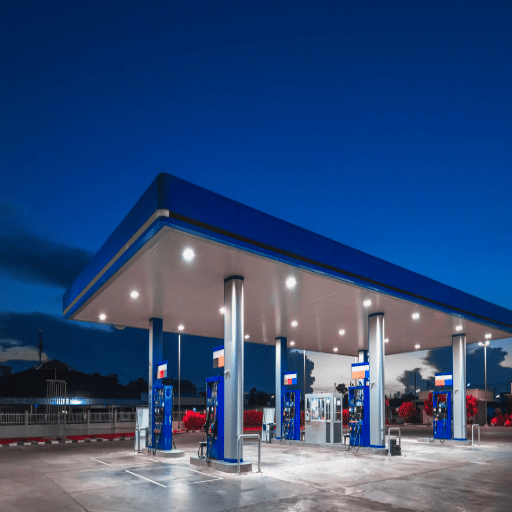
- Conduct Market Research
Carrying out local market analysis is crucial to obtain the right information about the customer’s preferences and needs, the competition that is already there, and the best places to settle down for your gas station. Moreover, you will be able to discover what customers need and what is missing in the current market. - Choose the Right Location
The ideal site for your gas station would be located on a high traffic road, highly visible and also near major urban areas to attract as many customers as possible. - Develop a Business Plan
Write down the most important details like how much money you will need to start the business and then the ongoing expenses, how much you would potentially profit and what your growth and differentiation strategies will be. - Obtain Necessary Licenses and Permits
Get all the licenses that you will need, for example, business, fuel sales, and environmental clearances or any other permits stipulated by the authority in your locality. - Secure Funding
Befitting the investment on the site and the development of the infrastructure besides the fueling and stocking of supply, and then check out the funding roads like loans or partners. - Build Partnerships
Create a network comprised of the fuel suppliers, the vendors, and the contractors to have trouble-free operations with an uninterrupted supply. - Set Up Operations
New workers will be hired and trained, plus gasoline pumps and the shop will be put in and, in the meantime, all the equipment is to be checked if it is safe to use. - Market Your Gas Station
Attracting customers through the use of signage, media, and promotions as well as gradually building the brand are among the benefits of marketing your gas station.
Success Formula: If you take these steps carefully, you will have a solid gas station business foundation that can be profitable.
Summarizing Key Takeaways on Costs
Opening a gas station isn’t one of the cheapest businesses; it necessitates a large upfront investment that can differ significantly from $250,000 to $2,000,000 depending on the location, size, and services provided. What does it include? The property purchase or lease, construction or renovation, fuel tanks, pumps, and convenience stores and their equipment are the main categories where money goes. The cost will always include another important element, which is licensing, permits, and insurance.
Another important thing to keep an eye on is operating costs as they will also get a big share from the business’ financial structure. Fuel is the primary cost and often accounts for up to 80% of total expenses. The other ongoing costs consist of salaries for employees, utility bills, inventory replenishment, and maintenance. If you want your business to last, then you need to come up with the right cost-control strategies.
One of the methods you could use to lessen your financial burden is to look for funding options such as small business loans, grants, or forming partnerships with large fuel suppliers. Good financial planning and market research will be your allies in dealing with these costs.
Final Thoughts on Starting a Gas Station
Opening up a fuel station is a big capital undertaking that needs detailed planning and good knowledge of the market. From handling initial and recurring expenses to seeking financial support, I have realized that proper financial preparation and smart choice-making are vitally important. The difficulties are much, but with hard and smart at the same time, the triumph is completely possible.
Next Steps for Aspiring Gas Station Owners
- Conduct Thorough Market Research
First of all, an area where a gas station is to be established should be analyzed. Study traffic patterns, competitor’s locations, and the demands of the community. Determine if the area is lacking gas stations or is there a surplus of them. - Develop a Business Plan
A detailed and extensive business plan should be created which would cover all the aspects like target market, pricing strategies, operational costs, revenue projections, and goals. Besides that, include possible funding sources and marketing strategies to draw in customers as well. - Secure Funding
Gas stations need a lot of money for the purchase of the land, construction, equipment, and fuel supply contracts. Look for the financing options like loans, grants, or partnerships but also make sure that you have a clear understanding of the different costs. - Choose a Location Wisely
Location is one of the most important deciding factors for a gas station’s success. The places with the highest vehicle traffic, the easiest accessibility, and enough space for the movement of vehicles and even the future expansion should be the ones you are looking for. - Obtain Permits and Licenses
Find out about the different permits and licenses required for a gas station at the local, state, and federal levels. Environmental compliance is really crucial because otherwise, legal troubles could arise. - Select Equipment and Suppliers
Get the equipment for the gas dispensers, tanks, and the convenience store from the well-known suppliers. Make deals with fuel wholesalers to get agreements that are both reliable and cost-effective. - Hire and Train Employees
Hire staff who are well-trained, knowledgeable, professional, and customer-oriented. Provide thorough training especially in matters of safety and handling emergencies related to fuel. - Create a Marketing Plan
Plan to attract a lot of customers by offering services like washing cars or having a convenience store. Give your gas station exposure through signage, offering promotions, and being involved in the community.
Final Note: All these steps together with persistence and flexibility will provide a very strong base for your gas station business.
Reference Sources
“Assessment of Health, Safety and Environmental Risks of Zahedan City Gasoline Stations”
Frequently Asked Questions (FAQs)
What are the average costs involved in building a gas station?
The average cost of a gas station of a gas station construction varies to a large extent determined by conditions such as the location, gas station size, and the type of gas station (self-service or full-service). The total building of a new gas station can easily cost between $300,000 and $2 million. The mentioned price range can account for the entire process from development through to equipment, construction, and other costs.
What factors affect the total project cost of building a gas station?
Among the factors influencing the total project cost of a gas station are site permitting, underground soil conditions, the size of your gas station, the cost of construction in the area, and availability of labor. The type and number of gas pumps and equipment required also constitute some of the primary key considerations. In addition, local regulations and permit requirements can also influence the overall costs involved in the station development.
How much does it cost to open a gas station?
Opening a gas station costs very differently based on certain factors such as the location for your gas station and the offer of specific services. It is expected that the costs for opening a gas station would increase at a minimum of $500,000 to $3 million. This would include construction, permits, equipment, and initial inventory expenses.
What are the typical startup costs for a gas station business?
Typical startup costs for a gas station business include land cost, construction, equipment, license fees, and inventory. Besides, the operational costs such as utilities, insurance, and labor would need to be factored in. The overall gas station startup costs may quickly become quite high, thus creating the necessity of a detailed cost breakdown before the gas station business starts.
Can I expect cost overruns when building a gas station?
Cost overruns are almost a certainty when building the gas station. For instance, you might incur extra expenses if you encounter unexpected construction difficulties, make changes to the project’s scope, or experience long waiting times for getting permits. Thus, it is advisable to include a certain percentage in your budget for expenses that might become unanticipated to be able to complete the gas station project.
What is the cost breakdown for starting a gas station?
A general cost breakdown for starting a gas station will usually entail land purchasing, construction and fitting of the gas station, plus all associated costs, free and working staff, and marketing. Out of these costs, each of the components can sometimes represent a huge portion of the overall cost to build a gas station, it is therefore prudent to prepare a well laid out budget that covers all these areas so as not to be caught off guard financially.
How much does the equipment cost for a new gas station?
The costs of establishing the equipment for a new gas station can differ quite a lot depending on the kind of and number of gas pumps, technology, and extra services offered like small shops or automatic washes etc. The range for average gas station equipment costs is usually from $100,000 to $500,000 or even beyond, contingent upon the specificities and demands of your station.
What should I consider when planning to open my gas station?
During the planning of your gas station’s opening, you should take into account the territory for the placement of the gas station, size of the station, services you want to offer, and competition in the area. Also, being acquainted with gas station industry trends and customers’ preferences can greatly aid you in making the right decisions regarding the development of your gas station.


